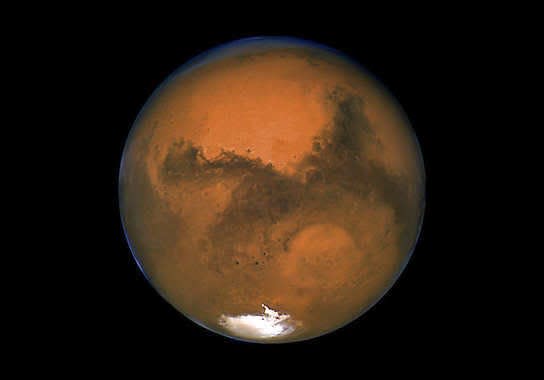Star Trak: Venus, Jupiter, Mars, Mercury, Saturn visible on nights in March
As March begins, Venus will be visible even before sunset if you look carefully 30 degrees high in the west. Jupiter will appear soon afterward less than a degree from Venus. The pair of planets will set before 8:30 p.m. local time. As the month passes, Jupiter will move downward toward the sun while Venus climbs higher.

Mars will be conspicuous in the constellation Taurus, outshining the bright orange star Aldebaran for most of the month. The best views of rust-colored Mars will appear a couple of hours after sunset when the Red Planet will be high in the southwest. By month's end Mars will set before 2:30 a.m. local time.
Several hours after Mars sets, Mercury will become visible in the morning sky. The small planet will be difficult to spot early in the month. Mercury will be close to Saturn, but the two planets will be only 13 degrees from the sun and close to the horizon, so the predawn sky may be too bright to see them.
Saturn will increase its separation from the sun during March, and by month's end it will rise 75 minutes before dawn. Look for it low in the east an hour before sunrise in the constellation Aquarius.
Not this year:Taste of Bloomington, scheduled for June 17, canceled for 4th year in a row
Equinox signals beginning of spring
The sun will cross the celestial equator (an extension of Earth's equator onto the sky) at 5:24 p.m. EDT March 20 heading north. This will mark the start of spring in the Northern Hemisphere and autumn in the Southern Hemisphere. For the next six months in the Northern Hemisphere, the days will be longer than the nights.
Day and night are not precisely the same length at the time of the equinox. That happens on different dates for different latitudes. At higher latitudes in the Northern Hemisphere, the date of equal day and night occurs before the March equinox. In the Southern Hemisphere, this happens after the March equinox. Information about the exact time of the equinox at different places on Earth's surface is provided by the U.S. Naval Observatory.
Moon phases
The moon will be full on March 7, at last quarter on March 14, new on March 21, and at first quarter on March 28.

Hal Kibbey is a retired science writer for Indiana University and is an amateur astronomer. Email him at hkibbey@gmail.com.
This article originally appeared on The Herald-Times: See planets Venus, Jupiter, Mars, Mercury, Saturn on March nights
